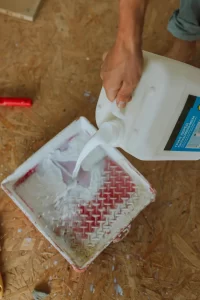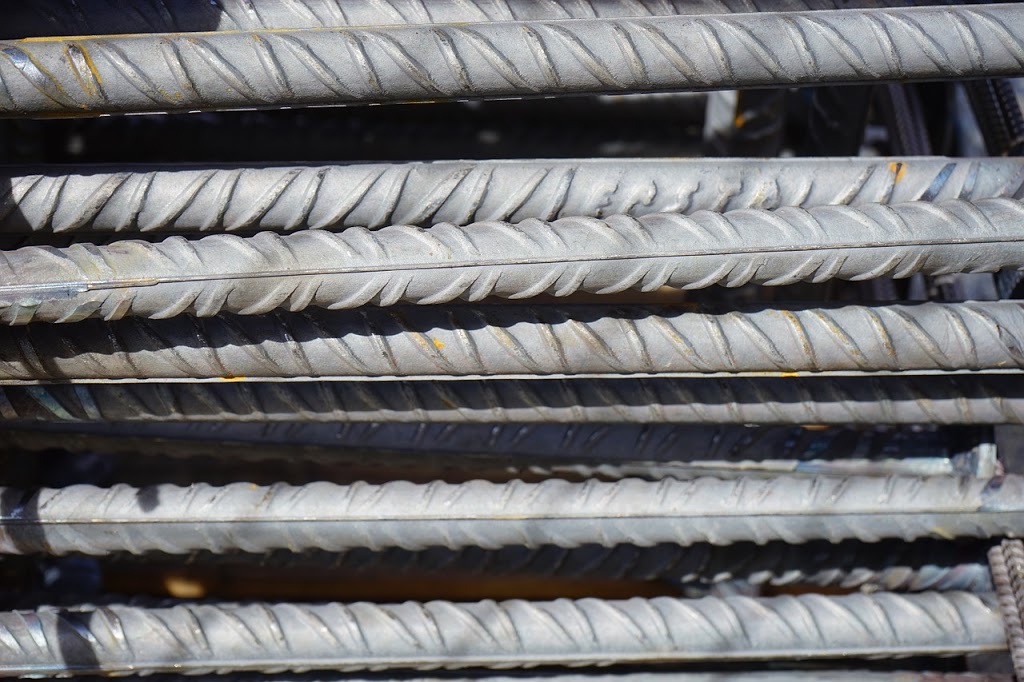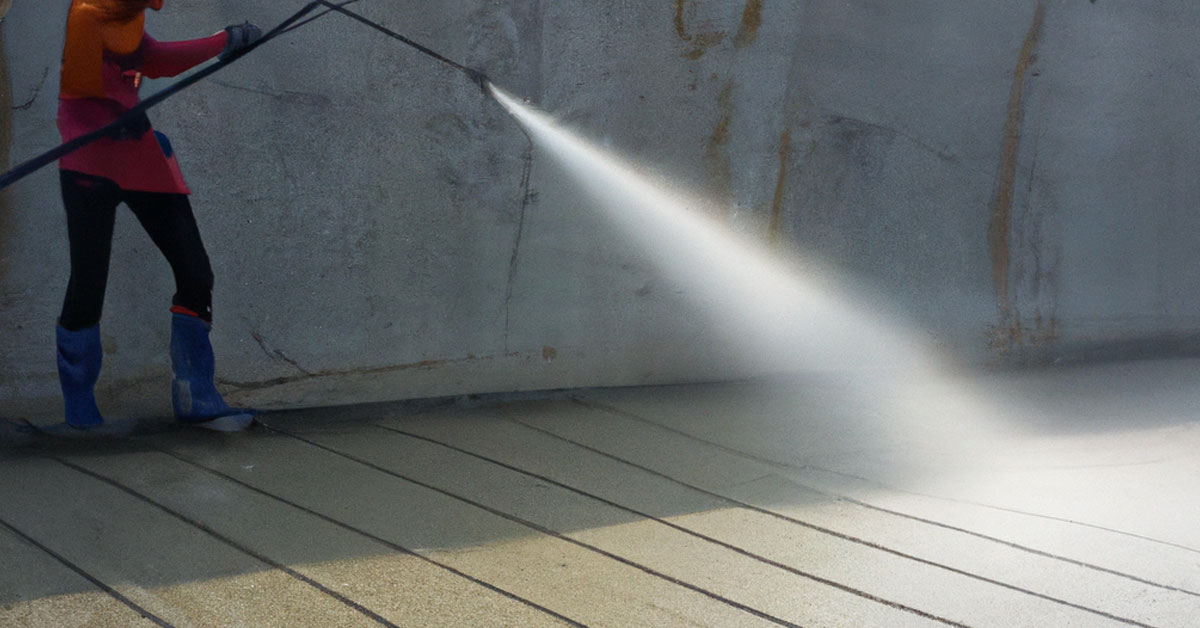In the context of construction and concrete technology, an admixture refers to a material other than water, aggregates, cement, used as an ingredient of concrete, and added to the batch immediately before or during its mixing. Admixtures are primarily used to modify the properties of fresh or hardened concrete. There are several types of admixtures, each serving a specific purpose.
Types of Concrete Admixture
Here is a list of 15 different types of admixtures used in concrete:
- Plasticizer (Water Reducing Admixture)
- Retarding Admixture
- Accelerating Admixture
- Air Entraining Concrete Admixture
- Pozzolanic Admixture
- Damp-proofing Admixture
- Gas forming Admixture.
- Alkali Aggregate Expansion inhibiting Admixture.
- Anti-washout Admixture
- Anti-detraining Admixture
- Grouting Admixture
- Corrosion inhibiting Admixture.
- Bonding Admixture
- Fungicidal, Germicidal, and Insecticidal Admixture
- Coloring Admixture
1. Water Reducing Admixture:
- These admixtures reduce the amount of water needed in a concrete mix, improving workability without sacrificing strength. They are often used to produce flowing concrete or reduce the water-cement ratio.
- The commonly used plasticizers are Calcium, sodium, and ammonium lignosulphonates. These are some of the new-generation superplasticizers namely acrylic polymer-based, polycarboxylate, multi-carboxylates, etc.
2. Retarding Admixture:
- Retarders slow down the setting time of concrete, which is useful in hot weather or when extended transportation time is required. This helps in preventing the concrete from setting too quickly and becoming unworkable.
- Calcium sulfate or gypsum is commonly used retarding admixture. Starch, cellulose products, common sugar, and salts of acids are some other retarders used in concrete. Most of the water-reducing admixtures also act as retarding admixtures and they are called retarding plasticizers.
3. Accelerating Admixture:
- Accelerating admixtures are generally used to reduce the initial setting time of concrete to increase the rate of early strength development in concrete. They speed up the process of the initial stage of the hardening of concrete hence they are also called accelerators. These accelerators also improve the strength of concrete in its early stage by increasing the rate of hydration.
- Earlier hardening of concrete is useful in several situations such as early removal of formwork, less period of curing, emergency repair works, constructions in low-temperature regions, etc.
- Some examples of accelerating admixtures are triethanolamine, calcium formate, silica fume, calcium chloride, finely divided silica gel, etc. Calcium chloride is a cheap and commonly used accelerating admixture.
4. Air Entraining Concrete Admixture:
- The discovery of air-entrained concrete was perhaps one of the most important advancements in the field of concrete technology. Their primary function is to increase the durability of concrete under freezing and thawing conditions. When these admixtures are added to the concrete mix, they will form millions of non-coalescing air bubbles throughout the mix which will act as flexible ball bearings and modify the plastic concrete’s properties regarding workability, segregation, bleeding, and finishing quality of concrete.
- The most used air entrainment concrete admixtures are Vinsol resin, N Tair, Airalon, Orvus Darex, Teepol, Cheecol, etc.
5. Pozzolanic or Mineral Admixture:
- Pozzolanic or mineral admixtures are used to prepare concrete mix which is best suitable for water-retaining structures like dams, reservoirs, bridges, etc. It also lowers the heat of hydration and thermal shrinkage.
- Pozzolanic admixture in optimum proportions mixed with Portland cement improves many qualities of concrete, such as improving resistance to attack by sulfate soils and seawater, increasing the watertightness, reducing the alkali-aggregate reaction, lowering susceptibility to dissolution and leaching, improving workability, etc.
- Pozzolanic or mineral admixtures are either natural or artificial. Examples of naturally occurring Pozzolanic materials are clay, shale, volcanic tuffs, pumicite, etc. Examples of artificial pozzolans available are fly ash, silica fume, blast furnace slag, Metakaoline, rice husk ash, surkhi, etc.
6. Damp-proofing or Waterproofing Admixture:
- Damp-proofing or waterproofing admixtures are used to make the concrete structure impervious to water under two conditions, firstly, when exposed to water pressure on one side, and secondly, when surface water is absorbed by capillary action.
- Waterproofing admixtures are generally available in liquid, powder, paste form, etc. The main constituents of these admixtures are aluminum and zinc sulfate, aluminum and calcium chloride, silicate of soda, etc. which are chemically active pore fillers.
7. Gas-forming Admixture:
- Gas-forming admixture is a compound that helps to create minute bubbles of in concrete. It is often used in the production of high-performance concrete. The gas-forming admixture is mixed with water and then added to the concrete mix at the desired time.
- Aluminum powder, activated carbon, and hydrogen peroxide are generally used as gas-forming chemical admixtures.
- When correctly regulated, the action of aluminum powder creates a modest expansion in plastic concrete or mortar, which reduces or eliminates settling, potentially strengthening the bond to reinforcing bars and enhancing grout’s ability to fill joints. It works very well for grouting under machine bases.
8. Alkali Aggregate Expansion Preventing Admixture:
-
Alkali-aggregate expansion inhibitors are compounds that inhibit the growth of crystals in concrete and mortar.
-
The most common alkali-aggregate expansion inhibitor is sodium or potassium silicate. These compounds react with the calcium hydroxide in cement to form a gel which prevents the formation of crystals.
-
In order to work, alkali-aggregate expansion inhibitors need to be mixed into a solution before they are applied to concrete or mortar. The solution is typically made by mixing water with a small amount of inhibitor powder.
9. Anti-washout Admixture:
- Anti-washout admixtures are water-soluble organic polymers that improve the cohesiveness of the concrete in a way that considerably reduces the washing out of the finer particles, such as cementitious material and sand from fresh concrete when it is submerged in water.
- They are frequently used with superplasticizers to produce flowing self-leveling concrete, which facilitates placement and compaction underwater.
- This type of admixture is prepared from natural or synthetic rubbers, cellulose-based thickeners, etc.
10. Air detraining Admixture:
- In some instances, aggregates have generated excessive air entrainment or gas release in plastic concrete, necessitating the use of an admixture that may dissipate the extra air or gas. Additionally, it could be necessary to remove a part of the entrained air from the concrete mix.
- For this purpose, substances including silicones, water-insoluble alcohols, and tributyl phosphate have been suggested. However, the most used air-detraining agent is tributyl phosphate.
11. Grouting Admixture:
- Different kinds of grout-mixture would be required for grouting in various situations or for various purposes. Sometimes grout combinations must set rapidly, and other times they must remain fluid for a long period of time so they can flow into all fissures and cavities.
- Consequently, depending on the situation, several admixtures are employed as grout admixtures. When the grout needs to be set quickly, accelerators like calcium chloride, triethanolamine, etc. are added as admixtures. Similar to this, retarders like gypsum, muriatic acid, etc. are used to shorten the time grout takes to set.
- Admixtures used for grouting are Accelerators, Retarders, Gas forming agents, Workability agents, and Plasticizers.
12. Corrosion Inhibiting Admixture:
- These admixtures are used to protect reinforced concrete structures from corrosion by reducing the permeability of concrete and preventing the ingress of chloride ions.
- Sodium benzoate, sodium nitrate, and sodium nitrite are some corrosion-inhibiting admixtures.
13. Bonding Admixture:
- Bonding admixtures are water emulsions of various organic compounds that are applied to an old concrete surface right before being patched with mortar or concrete. They are mixed with cement or mortar grout. They may occasionally be combined with the topping or repair material. They serve to strengthen the bond between the old and new concrete.
- This type of admixture is used for pavement overlays, screed over roof provision, repair works, etc.
- Bonding admixtures are water emulsions made from natural rubber, synthetic rubbers, and polymers like polyvinyl chloride, polyvinyl acetate, etc.
14. Fungicidal, Germicidal, Insecticidal Admixture:
Fungicidal, germicidal, and insecticidal admixtures are specialized types of concrete admixtures designed to provide protection against biological agents such as fungi, bacteria, and insects. These admixtures are typically used in specific construction applications where the growth of microorganisms or the presence of insects could compromise the integrity or aesthetics of the concrete structure. These substances include copper compounds, dieldrin emulsion, and polyhalogenated phenols.
15. Coloring Admixture:
Coloring agents can be added to concrete to achieve a wide range of colors. This is often used for decorative concrete applications. Some of the coloring admixtures and their resultant colors are tabulated below.
Admixture | Color Obtained |
| Iron or Red Oxide | Red |
| Hydroxides of iron | Yellow |
| Barium manganite and Ultramarine | Blue |
| Chromium oxide and chromium hydroxide | Green |
| Ferrous oxide | Purple |
| Carbon black | Black |
| Manganese black, Raw umber | Brown |
Last Words:
I hope you got complete information on the Types of Admixtures used in Concrete in this article.
If you found this article helpful, share it with your friends.
Leave a comment if I missed anything.
Happy Learning!!
You May Also Like to Read



